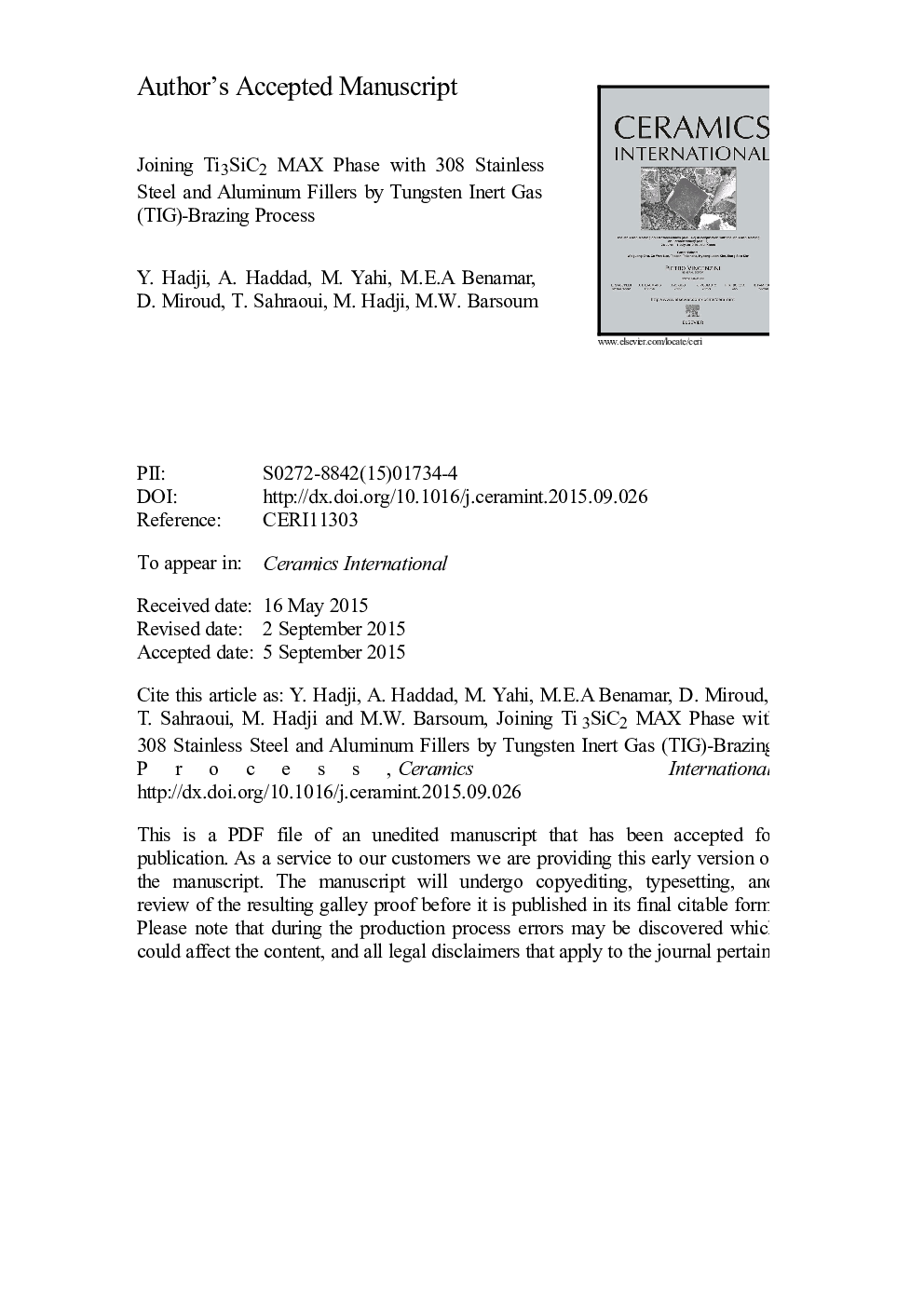| Article ID | Journal | Published Year | Pages | File Type |
|---|---|---|---|---|
| 10624428 | Ceramics International | 2016 | 27 Pages |
Abstract
Herein we report on the Tungsten Inert Gas (TIG) brazing of Ti3SiC2 to 308 stainless steel and Al brazing fillers materials. The microstructures of the interfaces were investigated by scanning electron microscopy and energy dispersive spectrometry. Intensive interactions including dissolution and diffusion simultaneously occurred within the Ti3SiC2 and at the Ti3SiC2/308 stainless steel interface during TIG-Brazing. The interfacial region between Ti3SiC2 and 308 stainless steel filler is comprised of a decomposed Ti3SiC2 zone, an interaction layer zone and a modified 308 stainless steel zone. When the Ti3SiC2 comes into contact with the 308 SS molten filler during TIG-brazing, it starts decomposing into a TiCx+SiLiquid+Sigas, and simultaneously, deep penetration of the molten 308 SS into the Ti3SiC2 occurred to form a complex bright phase containing [Fe, Cr, Ni, Ti, C, Si] and TiCx phase. The loss of Si is attributed to its evaporation during the TIG-brazing process. Thermally induced residual stress due to thermal expansion mismatches create interfacial cracks between the decomposed Ti3SiC2 and the interaction layer zone. The phases that most likely form when Ti3SiC2 is joined with Al brazed filler material are Al in which some Si is dissolved, TiAl3 and Ti4AlC3. No cracks were observed during TIG joining of Ti3SiC2 with Al brazing filler material.
Keywords
Related Topics
Physical Sciences and Engineering
Materials Science
Ceramics and Composites
Authors
Y. Hadji, A. Haddad, M. Yahi, M.E.A Benamar, D. Miroud, T. Sahraoui, M. Hadji, M.W. Barsoum,
